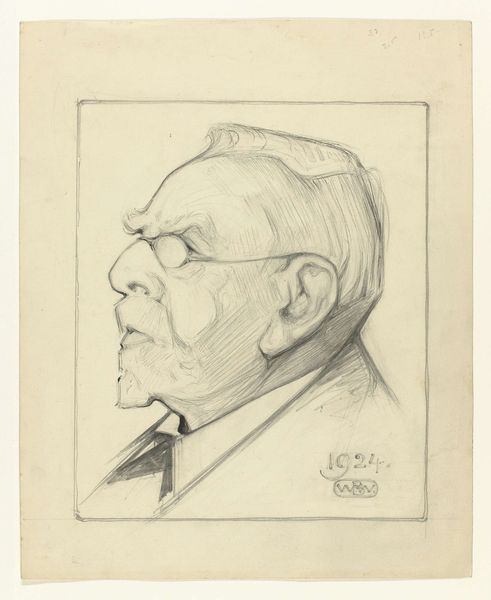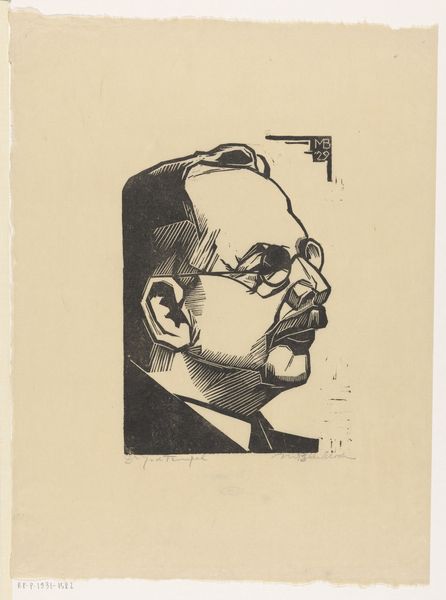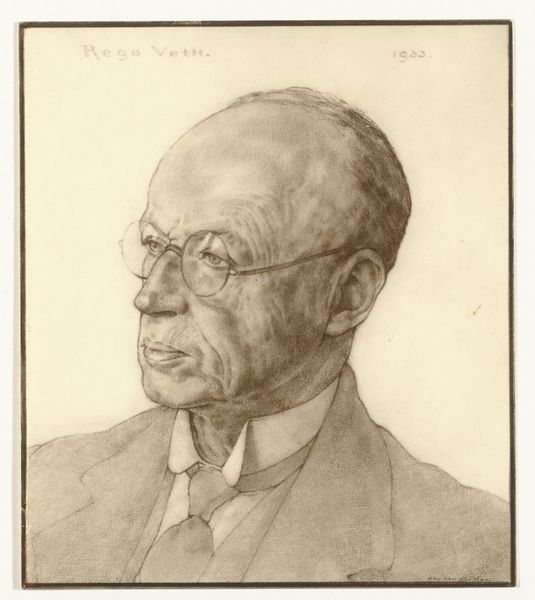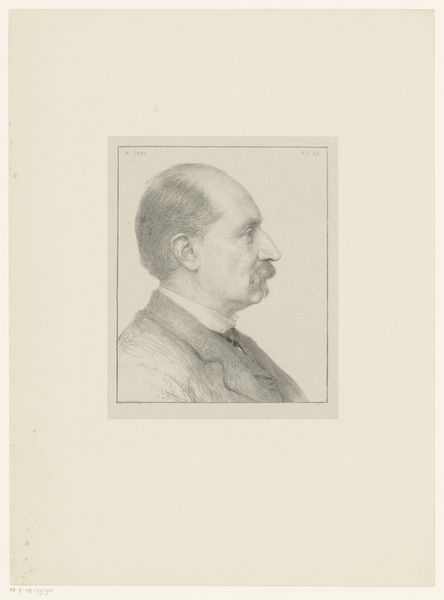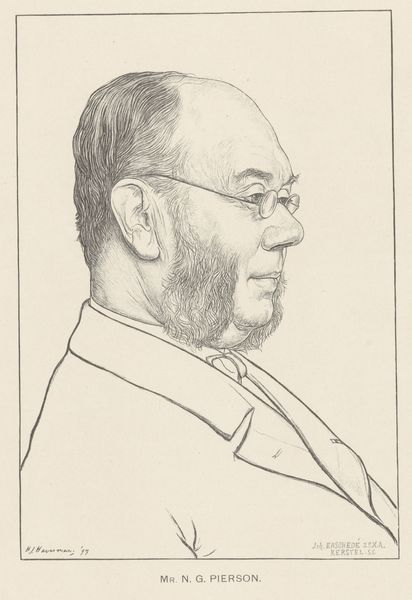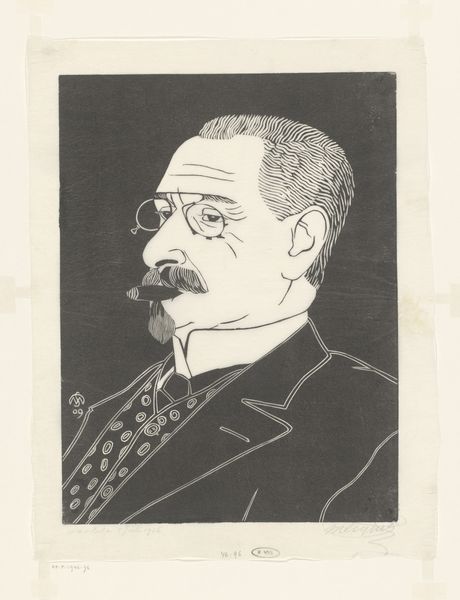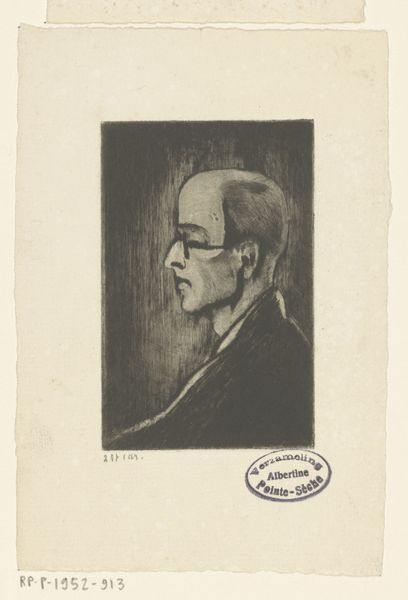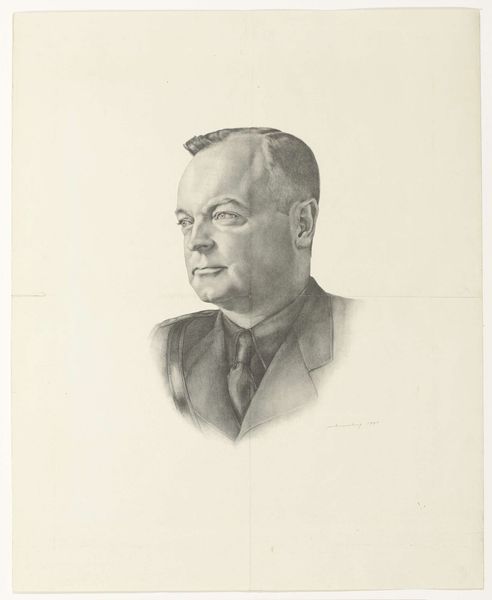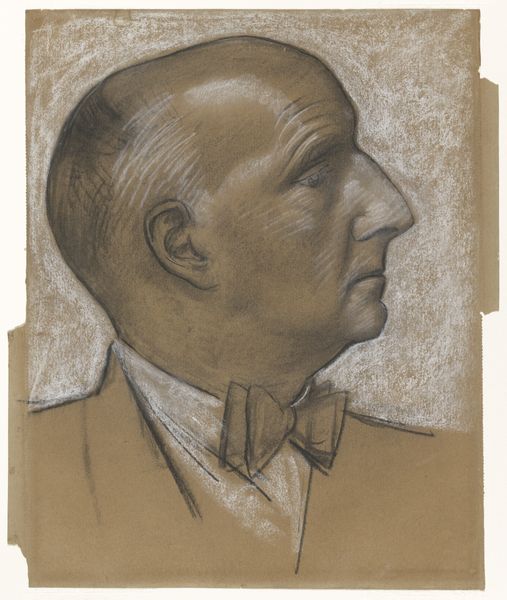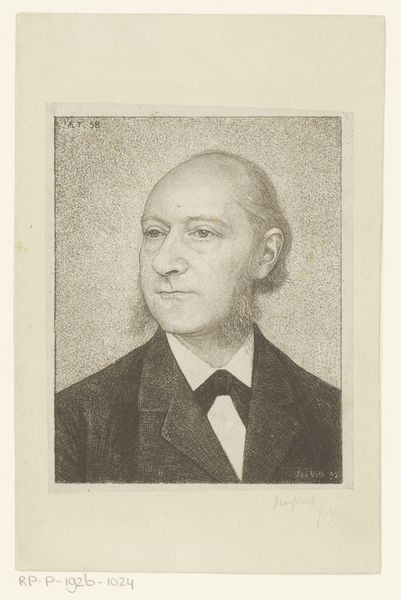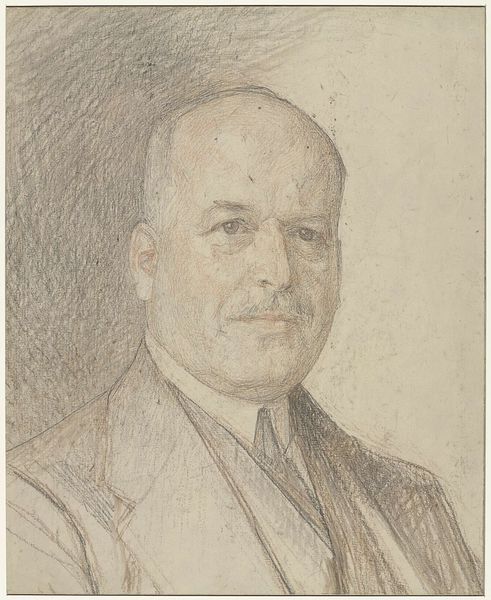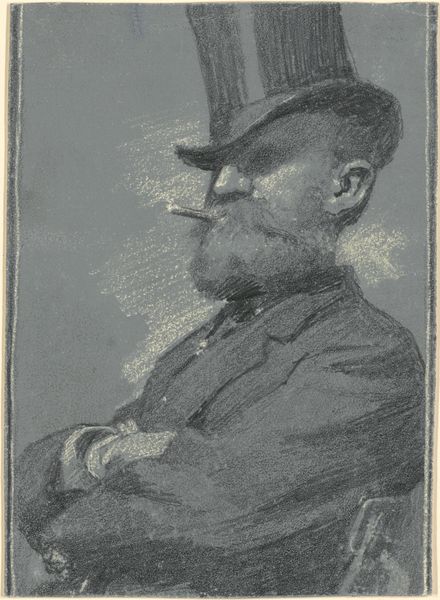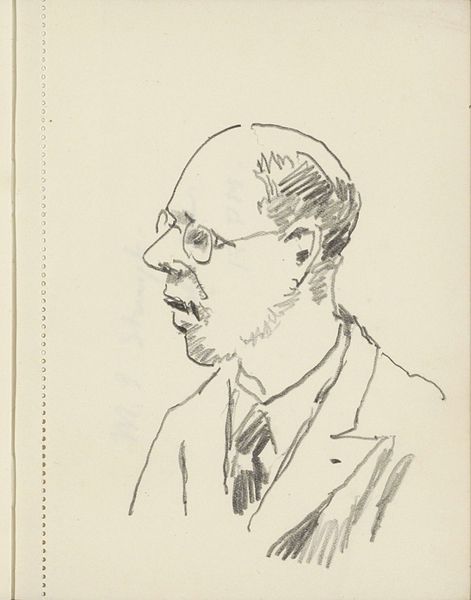
drawing, pencil
#
portrait
#
drawing
#
caricature
#
pencil drawing
#
pencil
#
realism
Dimensions: height 167 mm, width 120 mm, height 199 mm, width 150 mm
Copyright: Rijks Museum: Open Domain
Curator: Let’s take a look at “Portret van Frank van der Goes” by Pieter Willem van Baarsel, created in 1930. The artwork is currently held in the Rijksmuseum. Editor: It’s interesting how much personality comes through despite being a pencil drawing. The shading really emphasizes the contours of his face and that rather magnificent moustache! Curator: Van Baarsel seems to have used pencil drawing techniques to achieve an amazing realism. Frank van der Goes was, I believe, a prominent figure in the Dutch socialist movement, known for his writings and activism. This context would position the piece within early 20th-century social and political discourses in the Netherlands. Editor: Absolutely, and the choice of pencil—such a readily available and democratic material—fits that narrative. There's an inherent accessibility here that mirrors Goes's own political leanings. It really does invite questions about how portraiture functions not just as an aesthetic practice but as an exercise in commemorating political ideals too. The careful labor is evident here and suggests more than a simple study; it feels almost celebratory in its precision. Curator: You raise a key point about accessibility. Considering the role of art in shaping public perception, the distribution of images like this would have served to consolidate the stature of figures like Van der Goes within the socialist movement. I wonder, did it circulate widely? What impact might this image had in solidifying the identity of Dutch socialists? Editor: Those lines probably meant multiples were available and circulated around at the time. The visible labor makes you think about craft, about how different artforms come together for political expression in society, and it opens this image up as not just representation but construction through labor. I’d love to look into how it was framed at the time of creation. Curator: Well, thinking about the socio-political history, a formal portrait would definitely solidify Van der Goes as a prominent social actor, aligning with the political currents. Editor: Yes! It all adds so much when considering not just the "what" but also the "how" it's made, who had access, and why. Curator: A fitting point to conclude; this image and its history remind us how materials and context weave together to create both the aesthetic and the socio-political fabric of a work. Editor: Indeed. From pencil to politics—it's all connected.
Comments
No comments
Be the first to comment and join the conversation on the ultimate creative platform.
